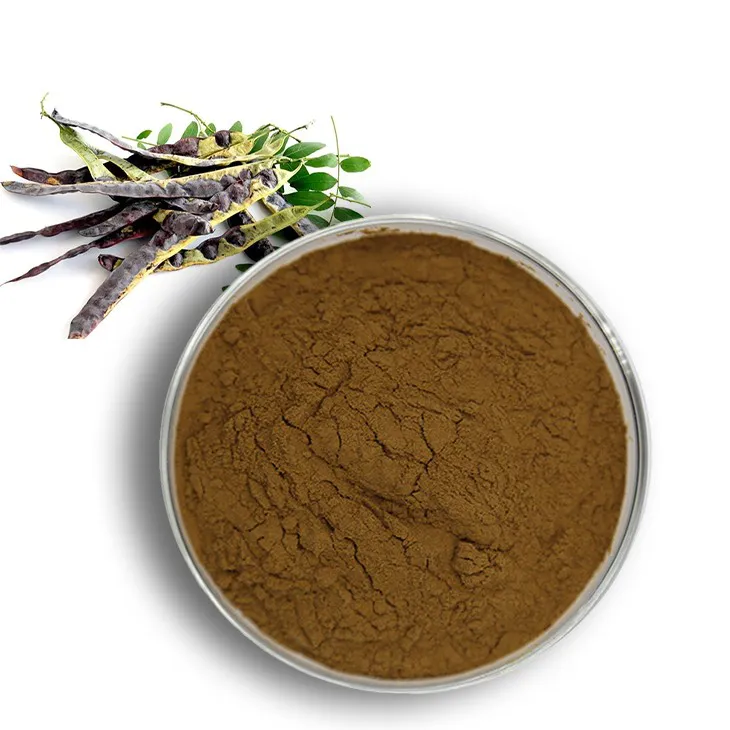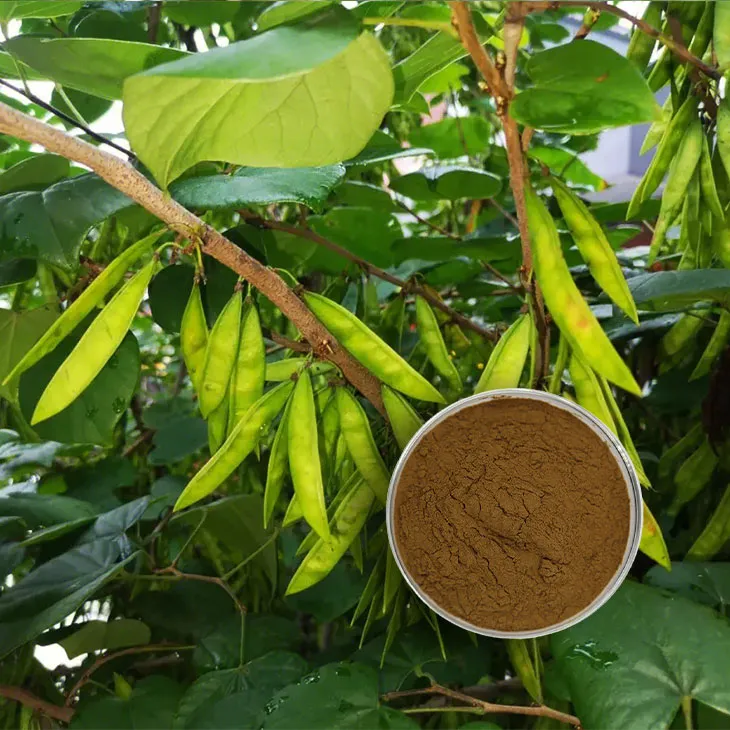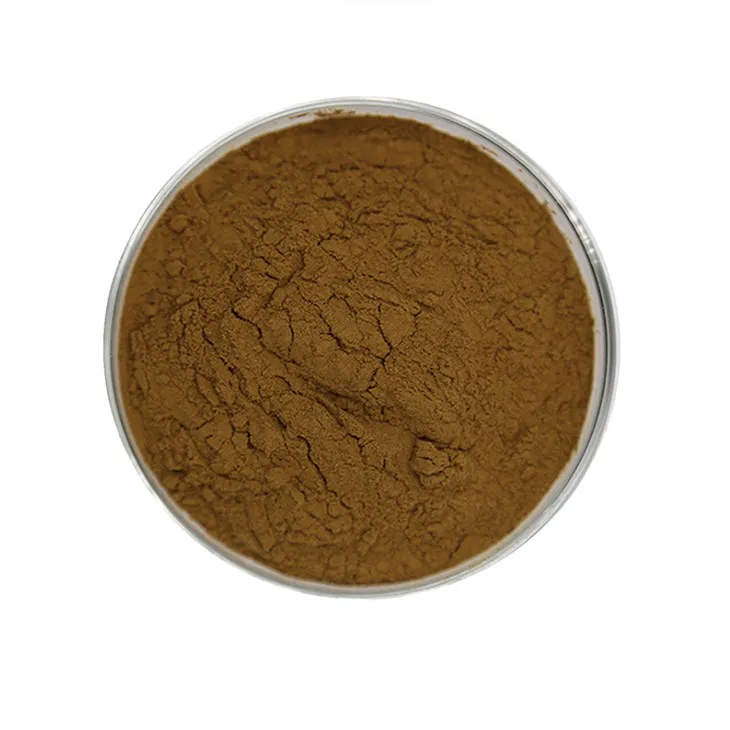- 0086-571-85302990
- sales@greenskybio.com
Best Saponin Extract: A Guide to Selecting the Best Saponin Extract
2024-11-13

1. Introduction
Saponins are a large and diverse group of plant - derived compounds that have been of great interest in recent years due to their numerous potential health benefits. They are found in a wide variety of plants and have been used in different cultures for centuries, both in traditional medicine and in various industrial applications. Understanding the different aspects of Saponin Extracts is crucial for making an informed choice when selecting the best one for a particular purpose, whether it is for use in dietary supplements, skincare products, or in the context of traditional medicine.

2. Understanding Saponins
2.1 Chemical Structure
Saponins are glycosides, which means they consist of a sugar part (glycone) and a non - sugar part (aglycone). The aglycone part can be a steroid or a triterpene, and this structural difference gives rise to different types of saponins. The unique chemical structure of saponins is what endows them with their characteristic properties, such as their ability to form foams when shaken in aqueous solutions. This foaming property was initially used to identify plants containing saponins.2.2 Health Benefits
Saponins have been associated with a range of health benefits. For example, some saponin - containing plants have been shown to have anti - inflammatory properties. In addition, they may play a role in modulating the immune system. In the context of cholesterol management, certain saponins have been suggested to help lower blood cholesterol levels. Some studies also indicate that saponins may have antioxidant effects, which can help protect cells from damage caused by free radicals.
3. Types of Saponin Extracts Based on Source Plants
3.1 Ginseng Saponin Extracts
Ginseng is a well - known plant in traditional medicine, especially in Asian cultures. Ginseng saponin extracts, also known as ginsenosides, are highly valued. Ginseng has been used for centuries to enhance energy, improve cognitive function, and boost the immune system. Ginsenosides are thought to be responsible for many of these effects. Different species of ginseng, such as Panax ginseng and Panax quinquefolius, may have slightly different profiles of ginsenosides, which can affect their therapeutic potential.3.2 Soy Saponin Extracts
Soybeans are a major source of saponins. Soy saponin extracts have received attention due to their potential health benefits. They may play a role in reducing the risk of certain cancers, such as breast and prostate cancer. Soy saponins also have antioxidant and anti - inflammatory properties. In addition, they can affect lipid metabolism, which may have implications for heart health.3.3 Quillaja Saponin Extracts
Quillaja saponaria is a South American tree that is a rich source of saponins. Quillaja saponin extracts are widely used in the pharmaceutical and food industries. In the pharmaceutical industry, they can be used as adjuvants in vaccines to enhance the immune response. In the food industry, they are used as natural emulsifiers. Quillaja saponins are also being studied for their potential antimicrobial and antiviral properties.
4. Extraction Methods and Their Impact on Saponin Extract Quality
4.1 Solvent Extraction
Solvent extraction is one of the most common methods for obtaining saponin extracts. Organic solvents such as ethanol or methanol are often used. The choice of solvent can affect the yield and quality of the extract. Ethanol is a popular choice as it is relatively safe and can effectively extract saponins. However, the extraction process needs to be carefully controlled to ensure that the solvent is completely removed from the final product, as residual solvents can be harmful.4.2 Supercritical Fluid Extraction
Supercritical fluid extraction, often using carbon dioxide as the supercritical fluid, has some advantages over solvent extraction. It can produce a cleaner extract with less contamination from other plant components. This method is also more environmentally friendly as it reduces the use of organic solvents. However, the equipment required for supercritical fluid extraction is more expensive, which can make the final product more costly.4.3 Maceration and Percolation
Maceration involves soaking the plant material in a solvent for a period of time, while percolation is a process where the solvent is slowly passed through the plant material. These traditional methods are relatively simple and cost - effective but may not be as efficient as modern extraction methods in terms of yield and purity.
5. Purity Levels and Their Significance
The purity of saponin extracts is an important factor to consider. Higher purity levels generally indicate a more concentrated and potentially more effective product. However, achieving high purity can also be more expensive. Purity can be affected by the extraction method, as well as by subsequent purification steps. For some applications, such as in pharmaceutical research, a very high - purity saponin extract may be required. In contrast, for use in some dietary supplements or skincare products, a slightly lower purity level may be acceptable, provided that the impurities are non - toxic and do not interfere with the product's functionality.
6. Selecting the Best Saponin Extract for Dietary Supplements
When choosing a saponin extract for use in dietary supplements, several factors need to be considered.
- Source Plant Compatibility: The source plant of the saponin extract should be chosen based on the desired health benefits. For example, if the goal is to boost energy, ginseng saponin extracts may be a good choice.
- Purity and Safety: The extract should be of sufficient purity and free from contaminants. It is important to ensure that any additives or solvents used in the extraction process are safe for consumption.
- Evidence - Based Benefits: Look for saponin extracts that have been studied for their specific health benefits. For instance, soy saponin extracts with evidence of reducing cancer risk may be preferred for those concerned about cancer prevention.
7. Selecting the Best Saponin Extract for Skincare
In the context of skincare, different considerations apply when choosing a saponin extract.
- Skin Compatibility: The saponin extract should be suitable for the skin type. For example, some saponin extracts may be more suitable for oily skin, while others may be better for dry or sensitive skin.
- Antioxidant and Anti - Inflammatory Properties: Since the skin is constantly exposed to environmental stressors, saponin extracts with antioxidant and anti - inflammatory properties can be beneficial for protecting and repairing the skin.
- Purity and Allergenicity: High - purity extracts are generally preferred to minimize the risk of allergic reactions. It is also important to ensure that the extract is free from any potential allergens.
8. Selecting the Best Saponin Extract for Traditional Medicine
For traditional medicine applications, the following factors are important:
- Herbal Tradition: Choose saponin extracts from plants that have a long history of use in traditional medicine systems. For example, ginseng has a long - standing reputation in Asian traditional medicine.
- Preparation and Dosage: Consider how the saponin extract will be prepared and what the appropriate dosage is. Traditional medicine often has specific preparation methods and dosage regimens.
- Quality Control: Ensure that the saponin extract is of high quality and meets the standards of traditional medicine. This may involve sourcing from reliable suppliers and following traditional quality control methods.
9. Conclusion
Selecting the best saponin extract requires a comprehensive understanding of various factors. These include the type of source plant, the extraction method used, the purity level of the extract, and the specific application for which the extract is intended. Whether it is for dietary supplements, skincare, or traditional medicine, careful consideration of these factors can help ensure that the chosen saponin extract is of high quality and suitable for its intended purpose. As research on saponins continues to expand, new insights into their properties and potential applications will likely emerge, further enhancing our ability to make informed choices when selecting saponin extracts.
FAQ:
What are the common source plants for saponin extracts?
Some common source plants for saponin extracts include ginseng, licorice, and quinoa. Ginseng is well - known for its potential health - promoting properties. Licorice contains saponins that are often used in traditional medicine. Quinoa is a plant where saponins are present and are usually removed during processing for consumption, but can also be a source for extraction for other purposes.
How does the extraction method affect the quality of saponin extract?
Different extraction methods can have a significant impact on the quality of saponin extract. For example, solvent extraction methods need to be carefully selected. If the wrong solvent is used, it may contaminate the extract or not effectively extract all the desired saponins. Supercritical fluid extraction is a more advanced method which can often result in a purer extract with fewer impurities compared to traditional solvent extraction. Also, extraction temperature and time play crucial roles. High temperatures for too long can degrade the saponins, reducing their effectiveness.
What are the main health benefits associated with saponin extracts?
Saponin extracts are associated with several health benefits. They can have antioxidant properties, which help in protecting the body's cells from damage caused by free radicals. In some cases, they may also have anti - inflammatory effects, which can be beneficial for conditions related to inflammation. Additionally, saponins can potentially help in regulating blood sugar levels and cholesterol levels, although more research is needed in these areas to fully understand the mechanisms and effectiveness.
How can one determine the purity level of a saponin extract?
Determining the purity level of a saponin extract can be a complex process. Analytical techniques such as high - performance liquid chromatography (HPLC) are often used. HPLC can separate and quantify the different components in the extract, allowing for the determination of the saponin content and the presence of other impurities. Another method is mass spectrometry, which can provide detailed information about the molecular composition of the extract. Additionally, looking at the manufacturing process and the reputation of the supplier can also give some indication of the likely purity level.
What should be considered when choosing a saponin extract for skincare?
When choosing a saponin extract for skincare, several factors should be considered. First, the source of the saponin is important. For example, saponins from plants known for their skin - friendly properties, like certain types of aloe vera - like plants, may be more suitable. The purity of the extract is crucial as impurities can cause skin irritation. Also, any potential allergens in the extract or its source plant need to be taken into account. Additionally, the form of the extract, whether it is in a cream, gel, or oil - based formulation, can affect its effectiveness and how well it is absorbed by the skin.
Related literature
- Saponin - Rich Plants: Sources, Extraction, and Health Benefits"
- "The Role of Saponins in Dietary Supplements: Quality and Efficacy"
- "Saponin Extracts in Traditional Medicine: A Review of Their Applications"
- ▶ Hesperidin
- ▶ Citrus Bioflavonoids
- ▶ Plant Extract
- ▶ lycopene
- ▶ Diosmin
- ▶ Grape seed extract
- ▶ Sea buckthorn Juice Powder
- ▶ Fruit Juice Powder
- ▶ Hops Extract
- ▶ Artichoke Extract
- ▶ Mushroom extract
- ▶ Astaxanthin
- ▶ Green Tea Extract
- ▶ Curcumin
- ▶ Horse Chestnut Extract
- ▶ Other Product
- ▶ Boswellia Serrata Extract
- ▶ Resveratrol
- ▶ Marigold Extract
- ▶ Grape Leaf Extract
- ▶ New Product
- ▶ Aminolevulinic acid
- ▶ Cranberry Extract
- ▶ Red Yeast Rice
- ▶ Red Wine Extract
-
Clove Powder
2024-11-13
-
Propolis Extract Powder
2024-11-13
-
Fig Extract
2024-11-13
-
Lycopene
2024-11-13
-
Ginger Extract
2024-11-13
-
Pomegranate Extract
2024-11-13
-
Curcuma Longa Extract
2024-11-13
-
Nutmeg Extract
2024-11-13
-
Dan Shen Root Extract/Salvia Root Extract
2024-11-13
-
Sea buckthorn oil
2024-11-13





















